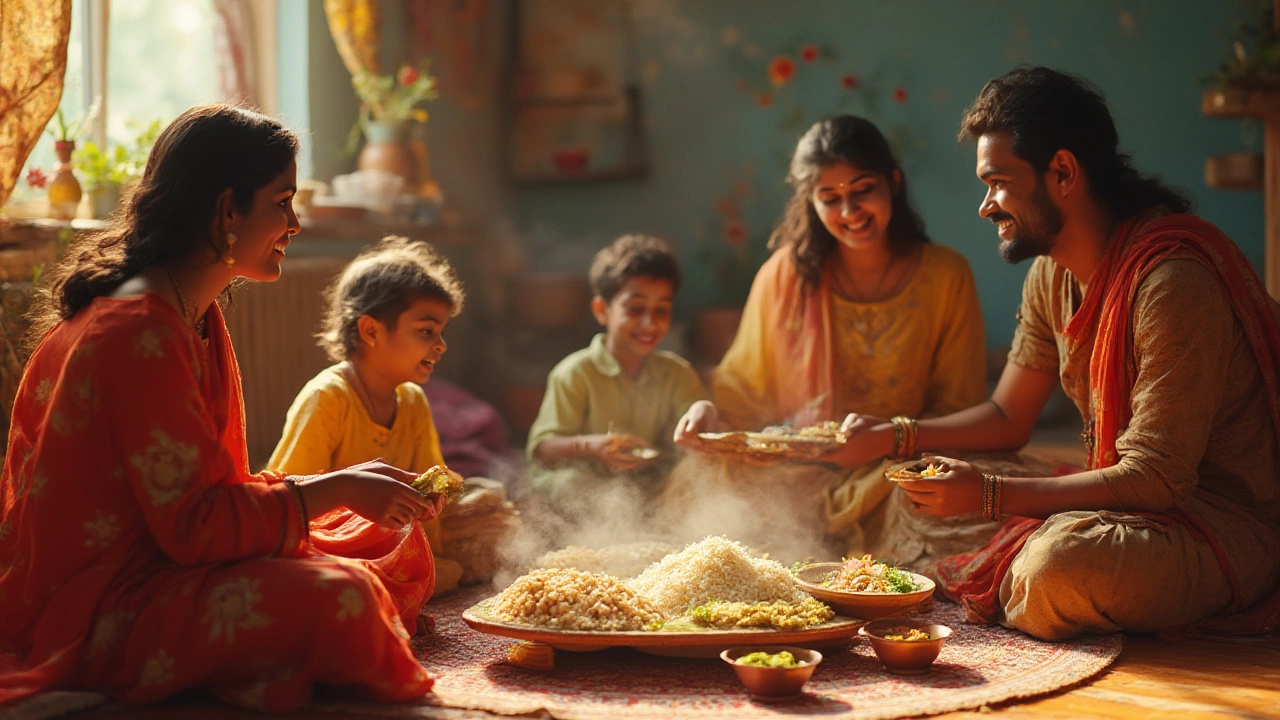SEARCH
What Indians Eat Daily: Typical Meals & Snacks
If you’re curious about the everyday food of India, you’re in the right place. Most Indians follow a simple rhythm: a hearty breakfast, a mid‑morning bite, a big lunch, an afternoon tea, and a lighter dinner. The exact dishes change from north to south, east to west, but the pattern stays the same.
Morning Meals: Breakfast and Snacks
Breakfast is usually the most varied part of the day. In the north, people love parathas—flatbreads stuffed with potatoes, cauliflower, or paneer—served with yoghurt or pickle. In the south, you’ll find idli and dosas, soft rice‑lentil cakes and crispy crepes that come with coconut chutney and sambar (a lentil‑vegetable stew). On the west coast, poha (flattened rice with peanuts and mustard seeds) is a quick pick‑me‑up.
Most folks add a small snack before work or school. A handful of roasted chickpeas, a banana, or a piece of jaggery (unrefined cane sugar) keeps the energy up. Tea is almost always part of the routine—strong, milky chai with a dash of cardamom is the go‑to drink.
Afternoon to Night: Lunch, Tea, and Dinner
Lunch is the biggest meal for many Indians. In the north, a typical plate includes roti or naan (wheat breads), a vegetable curry, dal (lentil soup), and sometimes a meat dish like chicken tikka. In the south, you’ll see a spread of rice, sambar, rasam (a tangy soup), and a variety of vegetable chutneys. In the east, especially Bengal, fish curry with mustard sauce is common, served with rice.
After lunch, the “tea break” or chai time arrives. It’s usually a sweet, milky brew paired with snacks like samosas (fried pastry filled with spiced potatoes) or pakoras (vegetable fritters). This pause is a social moment, often shared with coworkers or family.
Dinner is lighter but still satisfying. Many families stick to the same staples—roti or rice with a vegetable dish—but the portions are smaller. In urban areas, it’s common to have a quick stir‑fry, a bowl of soup, or even a sandwich. Some people finish the day with a glass of warm milk or a small piece of sweet, like kheer (rice pudding).
Across the country, street food adds excitement. Pani puri, chaat, and vada pav are easy to find after work and make for a tasty, inexpensive snack.
For travelers, the key is to balance flavor and health. Stick to boiled or steamed dishes, use yoghurt as a side, and drink plenty of water. If you’re trying street food, look for vendors with clean stalls and fresh ingredients.
Overall, Indian daily meals are rooted in simple grains, legumes, and veggies, seasoned with spices that boost taste and digestion. Knowing this routine helps you plan meals, avoid stomach issues, and enjoy the rich variety of Indian cuisine without overcomplicating things.

Most Eaten Food in India: What Is the Everyday Staple?
Curious what most Indians eat every day? Unpack India’s most eaten foods and how rice and roti rule millions of plates. Discover traditions and fun food facts!
Continue reading